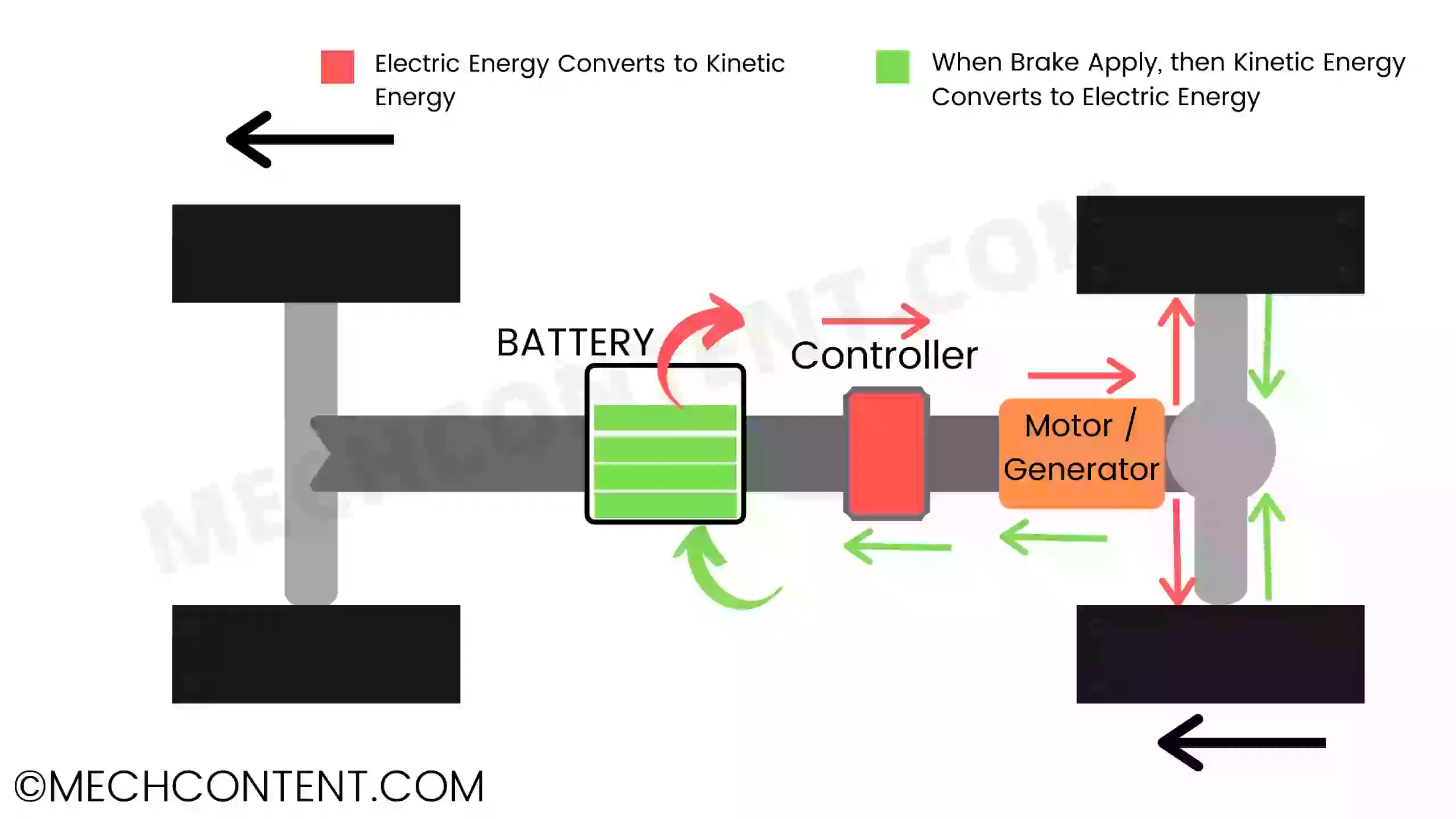Regenerative braking slows down the vehicle by utilizing kinetic energy of the rotating wheels to charge the battery of the vehicle.
Continue reading to know more about its principle, construction, and working.
In this article, we’re going to discuss:
- What is regenerative braking system?
1.1. Working principle: - Construction:
- Working of regenerative braking system:
- Application of regenerative braking system:
What is regenerative braking system?
A regenerative Braking System is a braking system that generates electrical energy during braking action. This generated energy is used for charging the battery, which is used again to rotate the motor (to run the vehicle).
Working principle:
This regenerative braking system works on the principle of ‘conservation of energy’. The principle says that, the energy converts from one form to another form.
In friction braking system, the kinetic energy of the wheel is converted into the heat energy, which is lost to the atmosphere.
But in regenerative system, the kinetic energy of wheels is converted into the electrical energy.

This system is mostly used in electric or hybrid vehicles, which uses a motor to run the vehicle.
During normal running, the motor converts the electrical energy from the battery into kinetic energy to rotate wheels.
When brakes are applied, the motor acts as a generator. It converts the kinetic energy of wheels into the electrical Energy (Battery Charging).
Construction:
It consists of the following components:
1) Motor/generator:
The motor in this system performs the two functions. It works as a motor when electric energy from the battery is supplied to run the vehicle. It works as a generator when the brakes are applied.
2) Battery:
The battery supplies the electric energy to the motor to run the vehicle. It gets charged by the generator when brake is applied.
3) Motor Controller:
When the vehicle is running, the controller supplies the electrical energy from the battery to the motor. When the driver presses the brake pedal, the controller stops the electric energy supply to the motor and starts charging from generator to battery.
Working of regenerative braking system:
Let’s see how this system works during normal running and during applying brakes.
Running Condition:
When the vehicle starts, the controller supplies the electrical energy from the battery to the motor.
Therefore, motor starts rotating, means it starts converting the electrical energy into the mechanical energy. Due to motor rotating, vehicle wheels also starts rotating.
When brake are applied:
When the driver applies the brake, the controller disconnects the electrical energy supply to the motor.
But, wheels are still in motion. Due to kinetic energy of wheels, motor also keeps rotating with wheels. Therefore, the motor works as generator and produces the electrical energy.
The controller receives this electrical energy from the generator and supplies to the battery. Hence, the battery starts to charge.
When the motor rotates due to kinetic energy of wheels, the motor produces back electromotive force which helps to stop wheel rotation.
Application of regenerative braking system:
The regenerative braking system is used in the following applications:
- Train
- Electric Car
superb work..upload more contents like this..so much use for engineering students ..
Thank you so much and sure.